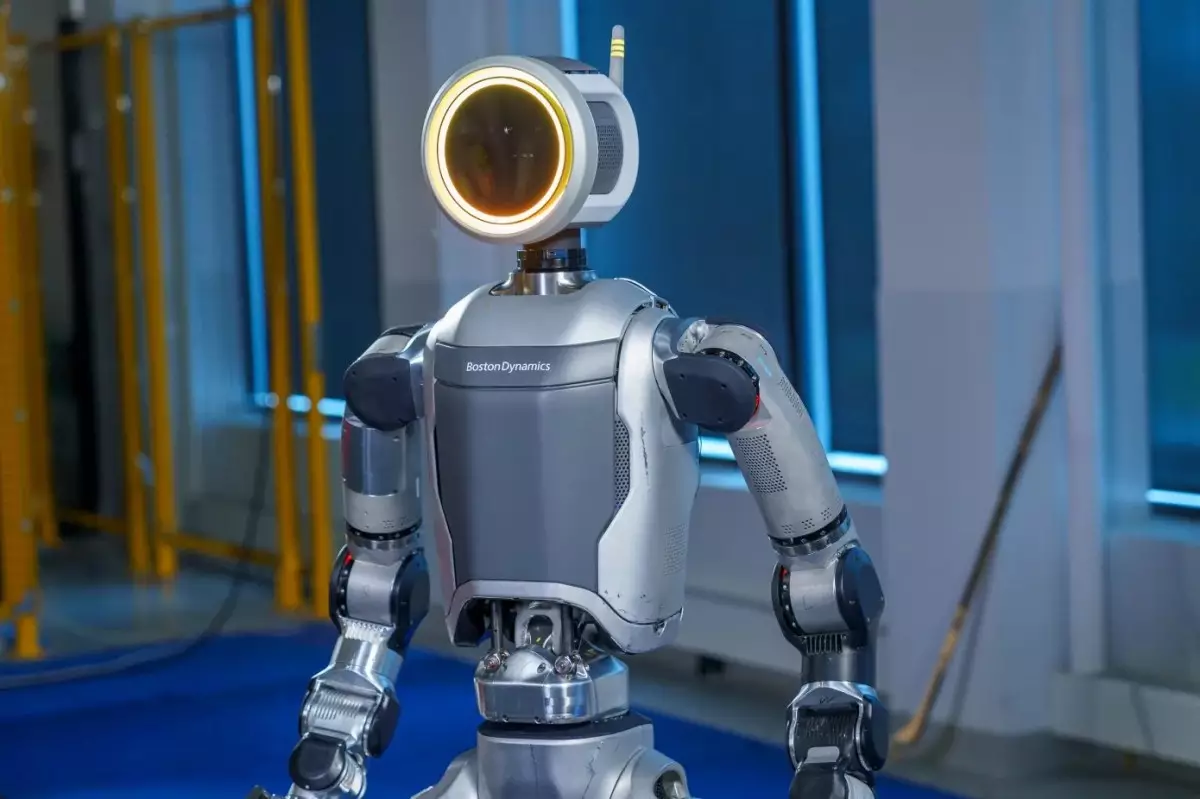In a groundbreaking announcement on Wednesday, Boston Dynamics and the Toyota Research Institute (TRI) declared their collaboration to enhance robotic capabilities through artificial intelligence. This partnership aims to merge Boston Dynamics’ cutting-edge humanoid robot technology, exemplified by the Atlas model, with TRI’s innovative approach to large behavior models (LBMs). These models share similarities with the well-known large language models (LLMs) utilized by systems like ChatGPT, aiming to imbue robots with a more advanced, adaptive form of intelligence. The implications of this development are vast, signaling a potential transformation in the way robots interact with their environment and handle complex tasks.
Last September, TechCrunch’s deep dive into TRI’s operations revealed exciting advancements in robot learning. Under the guidance of Gill Pratt, the institute has achieved an impressive 90% accuracy in robots executing household tasks, such as flipping pancakes. Pratt highlighted a significant shift in the machine learning landscape, noting that traditional methods demanded vast datasets—up to millions of training cases. However, the need for efficiency in physical robot training has led to a paradigm where only a handful of diverse scenarios is sufficient. This evolution reflects a fascinating trend in which robotics is embracing more agile and context-aware training methodologies, indicating that robots might soon adapt to new environments and tasks with greater ease than previously believed.
Boston Dynamics stands as a formidable presence in the realm of robotics, having developed robust systems such as Spot, a quadruped robot, and the now-electrified Atlas. The collaboration with TRI will leverage the strengths of both organizations: Boston Dynamics’ prowess in hardware engineering and TRI’s specialization in cutting-edge software development. As Robert Playter, CEO of Boston Dynamics, aptly stated, these organizations represent a unique combination of R&D talent joining forces to tackle intricate challenges facing the robotics industry.
The announcement follows Boston Dynamics’ reveal of its new electric Atlas design earlier this year, signifying a shift from the prior hydraulic models. Despite limited promotional content since its introduction, initial demonstrations, including push-up exercises, have showcased Atlas’s impressive physical capabilities. Such demonstrations serve to not only highlight advancements in strength and flexibility but also hint at the potential everyday applications of humanoid robots in various environments.
The robotic landscape is fiercely competitive, with companies like Agility, Figure, and Tesla also investing heavily in AI-driven humanoid robots. Unlike the collaborative approach seen between Boston Dynamics and TRI, many competitors have chosen to develop their artificial intelligence resources internally. This unique partnership is intriguing, especially considering that both companies are subsidiaries of automotive giants—Boston Dynamics under Hyundai and TRI under Toyota. Their collaboration, born from mutual competition in the automotive sector, underscores a strategic pivot towards robotics that could reshape their respective industries.
Furthermore, while Boston Dynamics explores the boundaries of advanced robotics through its affiliated entity, The AI Institute, TRI appears to adopt a more software-centric approach. As the landscape evolves, these varying methodologies create a fertile ground for innovation, as each organization seeks to pioneer general-purpose humanoids—robots capable of learning and executing a variety of tasks with human-like adaptability.
The ultimate aspiration shared by Boston Dynamics and TRI is to create robots that can match or surpass human capabilities in a wide range of tasks. Realizing such a vision requires significant breakthroughs in both hardware and software. While robotics hardware is making strides toward that ideal, achieving true artificial general intelligence remains a formidable hurdle. Efforts to develop software development kits (SDKs) to extend robots’ operational abilities signify progress; however, the comprehensive integration of intelligence into robotic systems is a complex challenge that may take longer to solve.
Looking ahead, the collaboration between Boston Dynamics and TRI has the potential to redefine the boundaries of robotics and set a new standard for humanoid capabilities. If successful, this initiative could not only enhance the functionality of robots in daily life but also inspire future innovations that address real-world problems, heralding a new era where robots are not just tools but collaborative partners in a variety of settings.

